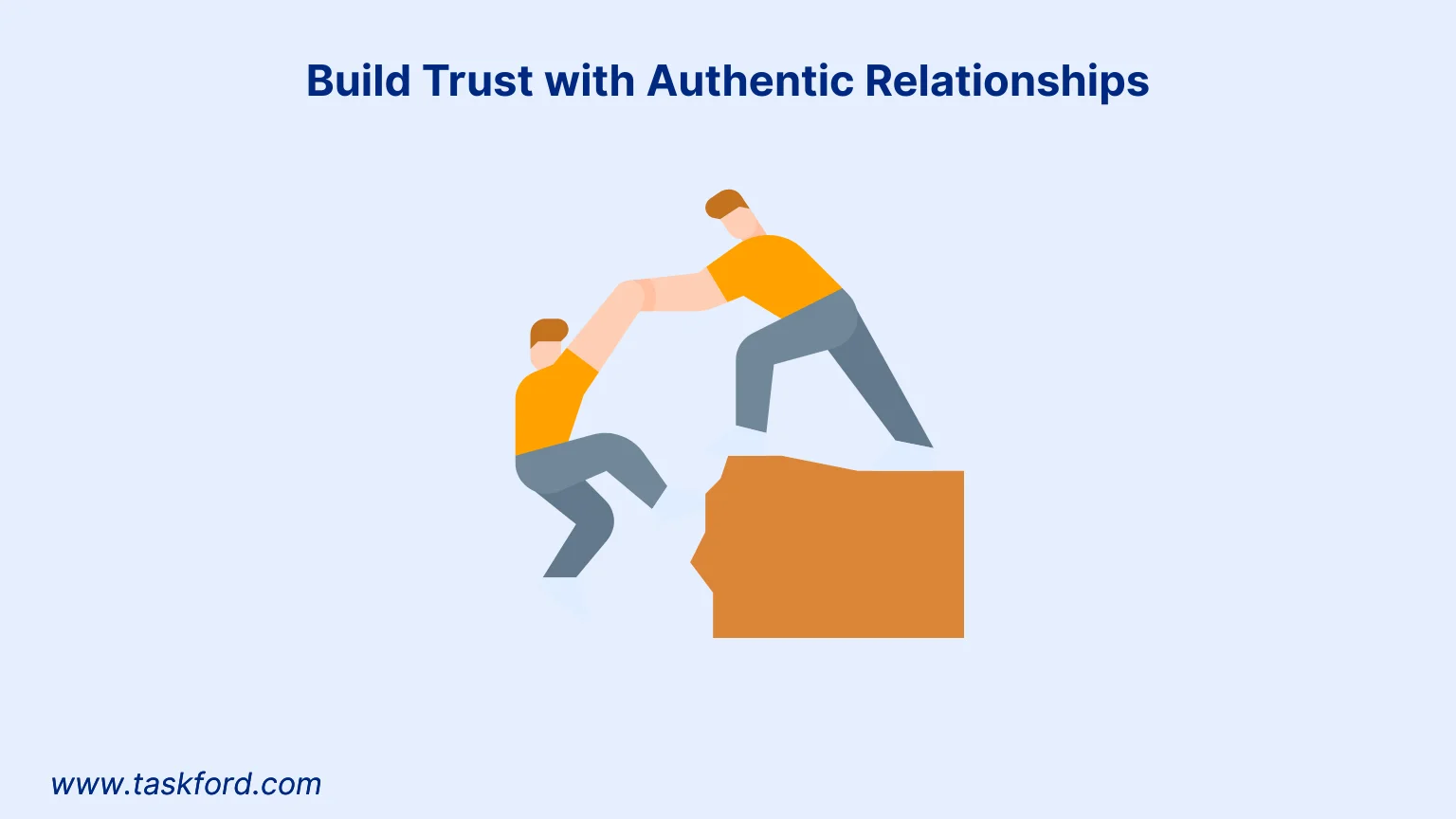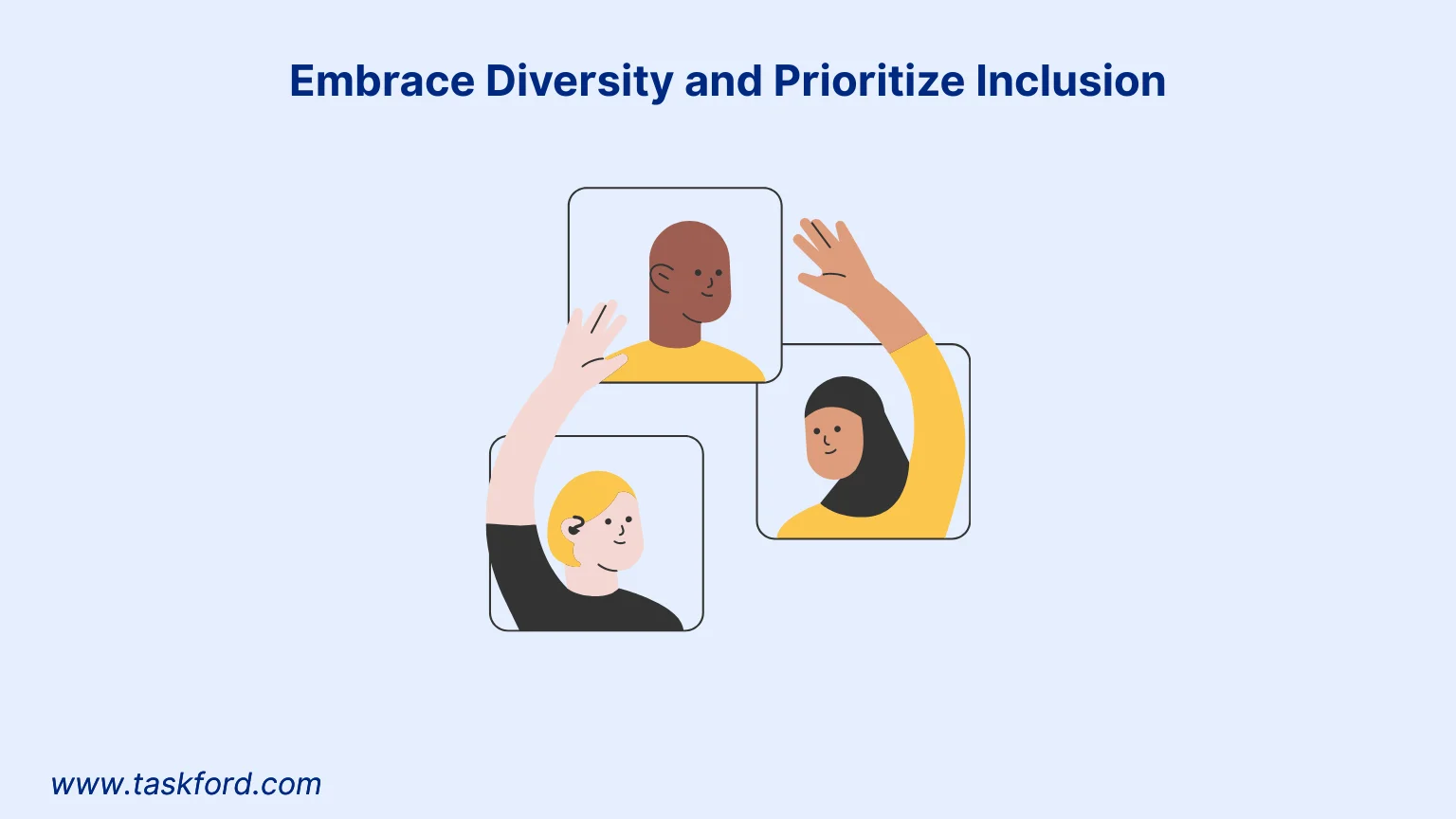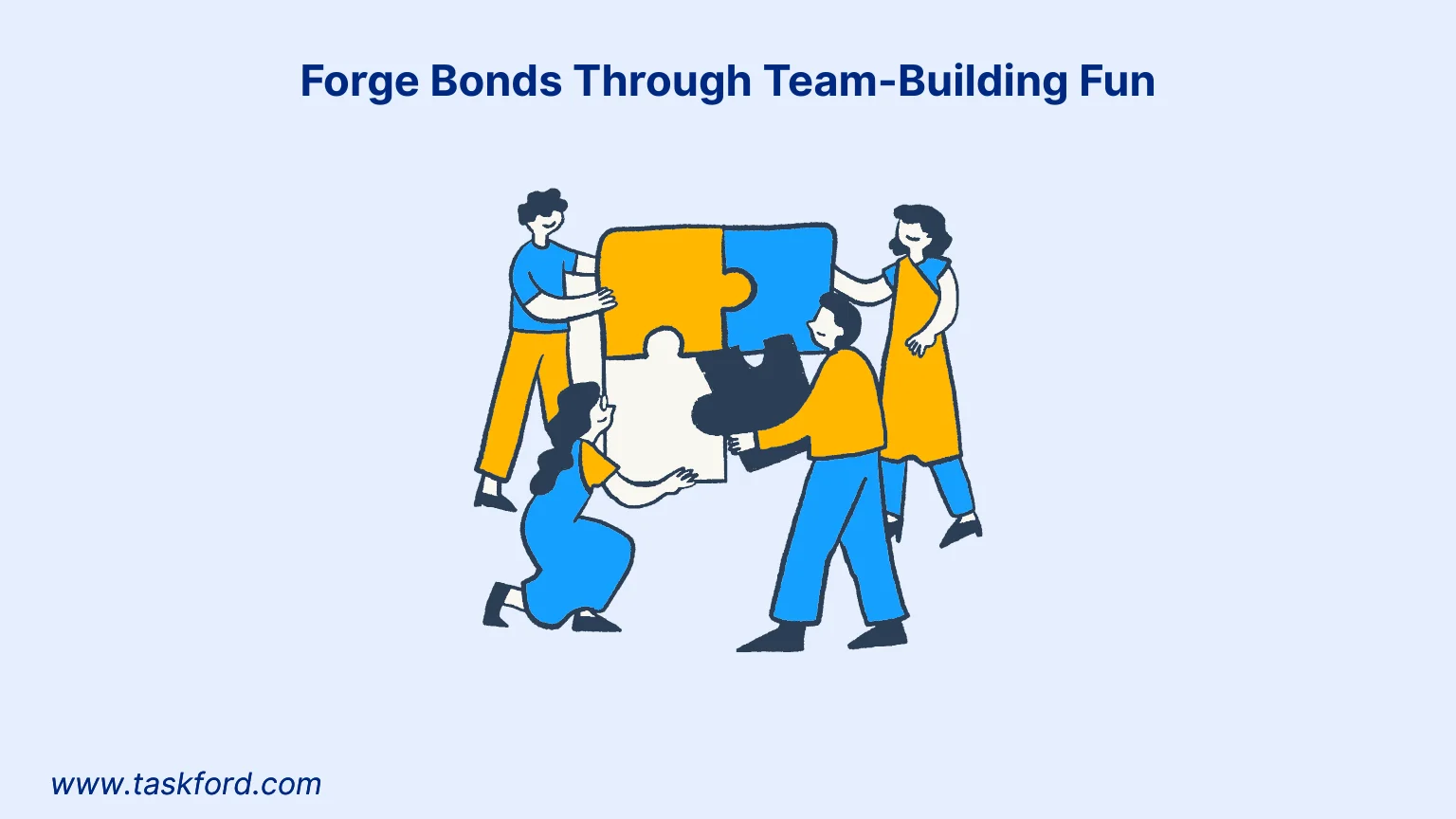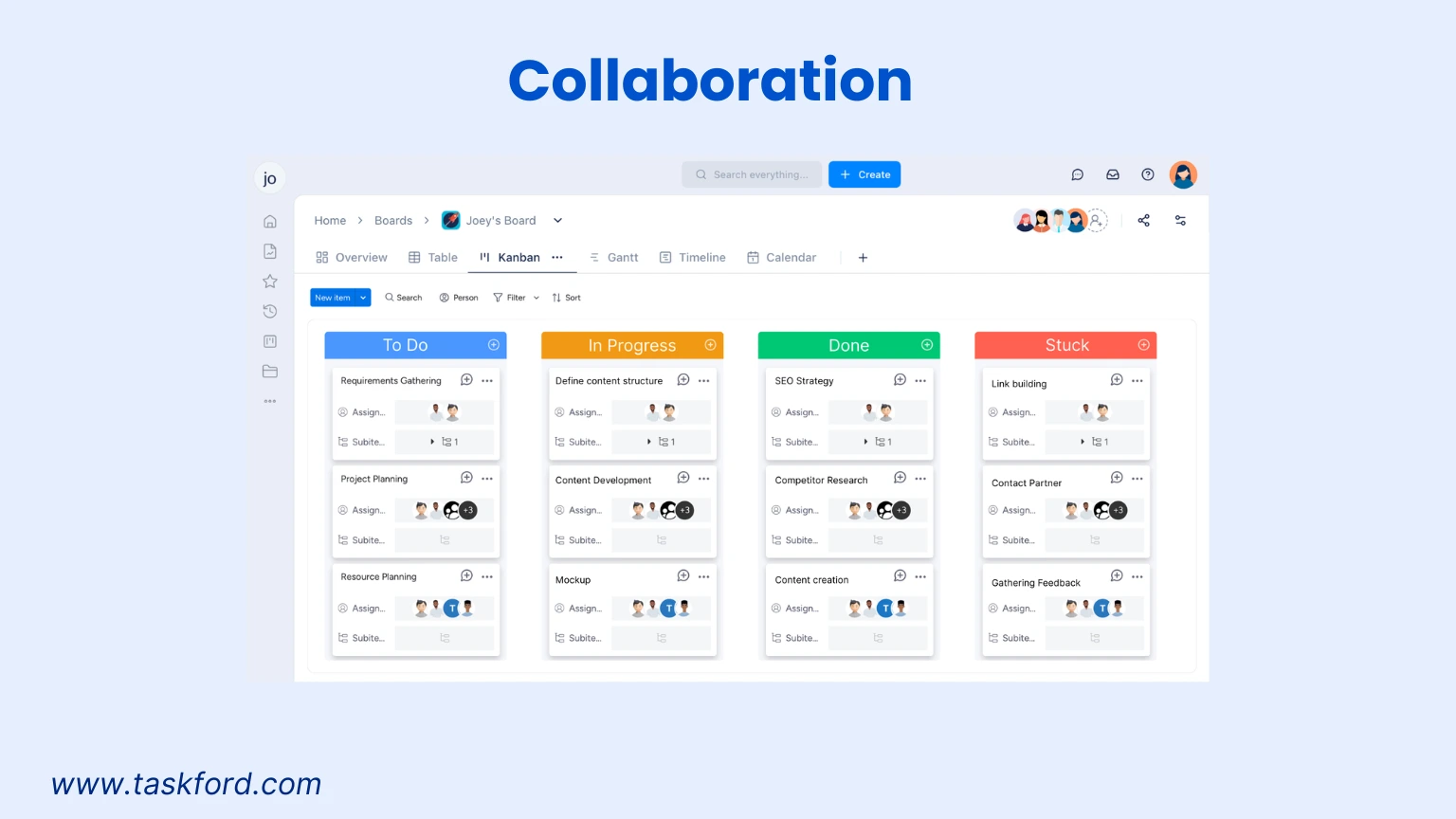How to Promote Teamwork in the Workplace: 10 Practical Strategies
Discover 10 practical strategies to promote teamwork in the workplace, boosting collaboration, productivity, and morale with actionable team management tips and resource management insights.
Teamwork isn’t just a nice-to-have; it’s the engine that powers a thriving workplace. When employees collaborate with purpose, projects hum along, creativity ignites, and morale skyrockets. But building a team that clicks takes effort, smart team management tips, and thoughtful resource management. In this comprehensive guide, we unpack 10 practical strategies to promote teamwork, each loaded with actionable steps, real-world examples, and insights to help managers and leaders foster a culture of collaboration.
These strategies will help you transform your workplace into a hub where trust, communication, and shared goals drive success. Ready to supercharge your team’s synergy? Let’s dive in!
Why Teamwork Is a Game-Changer
Effective teamwork delivers measurable benefits:
- Higher Productivity: Teams pool skills to tackle tasks faster.
- Creative Solutions: Diverse perspectives spark innovative ideas.
- Stronger Morale: Collaboration creates a sense of belonging.
- Better Resource Management: Well-coordinated teams use time, tools, and talent efficiently.
Challenges like miscommunication, mistrust, or vague goals can stall progress. The strategies and team management tips below offer a roadmap to overcome these hurdles and build a collaborative powerhouse.
10 Proven Strategies to Ignite Teamwork
1. Define Crystal-Clear Goals to Unite the Team

A team without clear goals is like a band without a song sheet. Everyone needs to know the destination and their role in getting there.
How to Do It:
- Set Specific Objectives: Use frameworks like SMART goals (Specific, Measurable, Achievable, Relevant, Time-bound). For example, “Boost website traffic by 15% in three months.”
- Map Out Roles: Assign tasks based on strengths, like designating a data analyst to track metrics.
- Hold Regular Check-Ins: Schedule biweekly meetings to review progress and adjust priorities.
Real-World Example:
A retail chain struggled with inconsistent customer service until they set a clear goal: “Improve customer satisfaction scores by 10% in Q1.” By assigning roles (e.g., frontline staff trained on greeting protocols), they hit their target and saw repeat business rise.
Team Management Tip:
Use project management tools like TaskFord, Trello or Asana to visualize goals and track tasks. This keeps everyone aligned and optimizes resource management by matching skills to responsibilities.
2. Support Open Communication Channels
Great teamwork hinges on communication. When team members feel safe to share ideas, collaboration flourishes.
How to Do It:
- Foster a Feedback Culture: Start meetings with open-ended questions like “What’s one idea to improve this project?”
- Leverage Digital Tools: Use Slack for quick chats or Microsoft Teams for structured discussions.
- Teach Listening Skills: Train teams to summarize others’ points to ensure clarity, like “So you’re suggesting we adjust the timeline?”
Real-World Example:
A remote software team faced delays due to miscommunication. They introduced daily 10-minute “stand-up” video calls to share updates. Within a month, project completion rates improved by 25%.
Why It Works:
Open communication builds trust and reduces errors, especially in diverse teams where aligning perspectives is key to success.
3. Build Trust with Authentic Relationships

Trust is the glue of teamwork. Without it, employees hold back, and collaboration stalls.
How to Do It:
- Lead with Transparency: Share your own challenges, like admitting a missed deadline, to model vulnerability.
- Plan Trust-Building Activities: Try games like “Truth Or Dare” to spark personal connections.
- Resolve Conflicts Fairly: Use neutral mediation to address disputes, focusing on solutions.
Real-World Example:
A nonprofit saw low team morale until they hosted a “Story Swap” event, where employees shared personal career journeys. This built empathy, leading to a 20% increase in collaborative project proposals.
Team Management Tip:
Trust encourages employees to share resources, like pitching in on tasks or sharing expertise, which enhances resource management and team efficiency.
4. Celebrate Every Victory, Big or Small
Recognition fuels motivation. Celebrating wins shows employees their efforts matter, strengthening team spirit.
How to Do It:
- Publicly Praise Efforts: Spotlight contributions in newsletters or team meetings, like “Kudos to Sarah for her stellar presentation.”
- Get Creative with Rewards: Offer unique perks, like a team dinner or a “day off pass” for hitting milestones.
- Highlight Collective Wins: Emphasize team achievements, like “Our combined effort landed the client contract.”
Real-World Example:
A marketing firm created a “Wins Board” in their office to showcase team successes. After three months, employee engagement scores rose by 15%, and project deadlines were met consistently.
Why It Works:
Celebration fosters pride and unity, encouraging employees to collaborate toward shared goals.
5. Embrace Diversity and Prioritize Inclusion

Diverse teams bring fresh ideas, but inclusion ensures everyone feels empowered to contribute.
How to Do It:
- Involve All Voices: Use structured brainstorming, like silent idea submissions, to include quieter members.
- Offer Cultural Training: Provide workshops on diversity and bias to foster understanding.
- Create Balanced Teams: Mix skills, backgrounds, and experience levels for dynamic collaboration.
Real-World Example:
A tech startup formed a diverse product team with members from engineering, design, and marketing. By valuing all inputs, they launched a feature that boosted user retention by 30%.
Team Management Tip:
Inclusion improves resource management by ensuring equitable access to tools and opportunities, like providing flexible training formats for different learning styles.
6. Empower Teams with Decision-Making Freedom
Micromanagement stifles creativity. Giving teams autonomy fosters ownership and sparks collaborative innovation.
How to Do It:
- Delegate with Purpose: Assign projects with clear goals but let teams choose their approach.
- Provide Tools and Support: Ensure access to budgets, software, or training needed to succeed.
- Trust Their Process: Step back unless guidance is requested, allowing teams to learn from mistakes.
Real-World Example:
A design agency gave a team freedom to revamp a client’s website. Their bold approach cut delivery time by 15% and earned glowing client feedback.
Team Management Tip:
Autonomy optimizes resource management by letting teams allocate tasks based on expertise, reducing delays and boosting confidence.
7. Forge Bonds Through Team-Building Fun

Strong personal connections make collaboration smoother. Team-building activities create friendships that translate to better teamwork.
How to Do It:
- Plan Creative Outings: Try unique activities like a pottery class or a group hike to spark laughter and connection.
- Encourage Informal Chats: Set up virtual “coffee breaks” for remote teams to discuss hobbies or interests.
- Keep It Inclusive: Offer options, like in-person or virtual events, to suit all preferences.
Real-World Example:
A logistics team organized a quarterly “Build-a-Project” challenge, where employees collaborated on fun tasks like designing a mini warehouse model. This revealed leadership potential in junior staff, improving task delegation.
Why It Works:
Fun activities break down barriers, making it easier for teams to collaborate under pressure.
8. Keep Team Dynamics Fresh with Regular Check-Ins
Teamwork evolves, and periodic reviews keep it on track. Assessing dynamics helps spot issues early and maintain momentum.
How to Do It:
- Collect Anonymous Feedback: Use surveys to uncover concerns, like workload imbalances.
- Host Project Retrospectives: Discuss successes and challenges after each project to refine processes.
- Adapt Leadership Style: Shift from hands-on guidance for new teams to hands-off support for experienced ones.
Real-World Example:
A sales team held monthly feedback sessions, identifying a need for clearer client handoffs. Adjusting their process cut response times by 10%.
Why It Works:
Regular check-ins keep teams aligned and ensure resources are used effectively, addressing inefficiencies promptly.
9. Fuel Growth with Ongoing Training

Learning together strengthens teams. Training builds skills and fosters a shared commitment to improvement.
How to Do It:
- Offer Tailored Workshops: Provide sessions on leadership, communication, or industry-specific skills.
- Promote Cross-Training: Let employees learn colleagues’ roles to increase versatility.
- Support Career Goals: Provide access to platforms like LinkedIn Learning or mentorship programs.
Real-World Example:
A healthcare provider trained staff to handle multiple roles, like scheduling and billing. When a key employee was out, others filled in, maintaining operations without disruption.
Why It Works:
Training equips teams to tackle challenges collaboratively and ensures efficient resource management by addressing skill gaps.
10. Boost Collaboration with Smart Technology

The right tools make teamwork smoother, keeping everyone connected and organized.
How to Do It:
- Adopt Visual Task Trackers: Use Asana or ClickUp to monitor progress and assign tasks.
- Enable Virtual Connection: Leverage Zoom or Webex for face-to-face collaboration in remote settings.
- Centralize Resources: Store files in shared platforms like Dropbox for easy access.
(Learn more: Top 5 Virtual Collaboration Tools for Teams in 2025)
Real-World Example:
An e-commerce team used ClickUp to manage product launches. By centralizing tasks and feedback, they reduced launch delays by 20%.
Team Management Tip: Use TaskFord to Enhance Team Collaboration
Train teams on tools to ensure adoption. This saves time on repetitive tasks, enhancing resource management.
TaskFord, a comprehensive project management and resource planning platform, enhances team collaboration with user-friendly and advanced features like drag-and-drop Kanban boards, Gantt charts, real-time notifications, status updates, ensuring clear task visibility, clear alignment for hybrid/remote teams, fair workload distribution, and optimized resource management.
Overcoming Teamwork Challenges
Common obstacles can derail collaboration. Here’s how to tackle them:
- Conflicts: Mediate disputes with a focus on solutions, using tools like conflict resolution frameworks.
- Uneven Workloads: Track tasks with software to ensure fair distribution.
- Low Engagement: Conduct one-on-ones to uncover issues and offer tailored support, like flexible hours.
Addressing these proactively keeps teams cohesive and productive.
(Learn more: Top 5 Challenges Teams Face Without Collaborative Project Management Software)
Leadership’s Role in Teamwork Success
Leaders set the tone for collaboration. By modeling openness and empathy, they create a culture where teamwork thrives.
Key Leadership Practices:
- Stay Accessible: Offer regular office hours for team members to share ideas.
- Show Empathy: Support employees during personal challenges, like adjusting deadlines.
- Align with Purpose: Connect team goals to the company’s mission to inspire unity.
Strong leadership ties team management tips and resource management together, fostering a collaborative environment.
Measuring Teamwork’s Impact
Track these metrics to assess your efforts:
- Project Success: Are teams delivering on time with high quality?
- Employee Sentiment: Use surveys to gauge morale and engagement.
- Efficiency Gains: Measure output to see collaboration’s impact.
Reviewing these helps refine strategies and sustain a teamwork-driven culture.
Conclusion: Unleashing Teamwork’s Full Potential
Promoting teamwork transforms workplaces into vibrant hubs of creativity and productivity. By setting clear goals, nurturing communication, building trust, and leveraging technology, you can create a culture where collaboration shines. These 10 strategies, infused with team management tips and resource management practices, provide a roadmap to success.
Start with one strategy, test it, and build from there. With dedication, you’ll foster a workplace where teams unite, innovate, and drive your organization forward. Ready to spark teamwork? Take action today and watch your team soar!
Learn more
- Understanding The Role Of A Team Manager : Key Skills And Strategies
- How You Can Be A Good Manager: 8 Key Characteristics to Lead a Successful Team
- Top 7 Leadership Mistakes That Can Destroy Team Trust
Subscribe for Expert Tips
Unlock expert insights and stay ahead with TaskFord. Sign up now to receive valuable tips, strategies, and updates directly in your inbox.